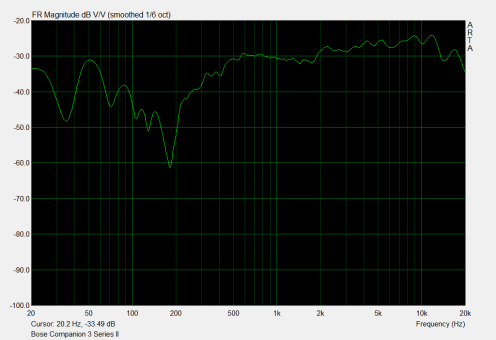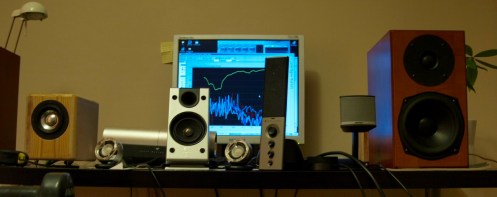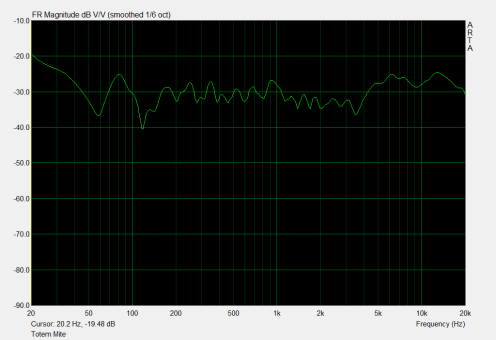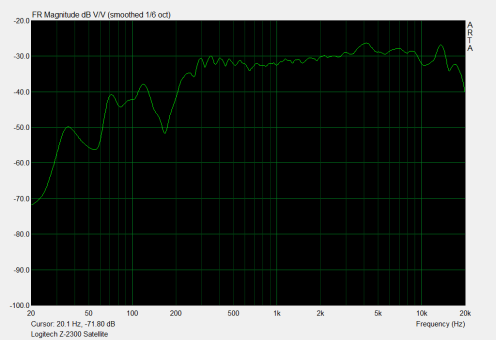A friend of mine was kind enough to lend me his beloved Companion 3, so I can’t say anything bad about it… or can I? 🙂
This should be an interesting one, since there is a lot of hype around Bose products with people getting emotional and so on.
Frequency Response – Bose Companion 3
The FR is quite smooth from 500Hz up. However moving down from 500Hz, it starts to drop very fast. Now, my measurements slowly start to loose accuracy below 300Hz, but the deep notch at 190Hz is not irrelevant at all. In fact, when doing HD measurements, there is a range around 160Hz when both the sub and the satellite have very little output. Meaning that there is a gap between where the satellites stop and the sub starts.
Filling this gap is always a challenge when working with small satellites, since there is a limit on how low they can go without producing too much distortion.In the case of Altec Lansing VS4121 the sub produces significant output up to 200Hz to cover up for the satellites, which is a very bad design decision. In the case of Bose, the sub starts to rolls off earlier(which is good), but the satellites are too small to pick where the subs leaves off.
I know Bose has a lot of emphasis on wide sound dispersion (which I like) in their designs by using small drivers. However, in this case they have taken that design philosophy too far.
Harmonic Distortion – Bose Companion 3
In comparison to Logitech Z-2300, Bose has higher 2nd order HD and a tad lower 3rd order HD above 1Khz, which means that Bose probably has a more laid back sound. Not surprisingly given the small driver, below 800Hz, Bose clearly has higher HD than Z-2300.
Note: Anywhere below 200Hz doesn’t really count in this HD measurement, because satellites do not have much output.
I guess that’s about it!
Again I encourage you to open the graphs of different speakers in different tabs, switch between the tabs and do your own assessment. It is the whole point of this blog!













